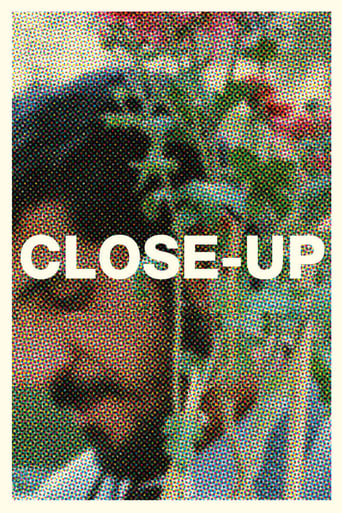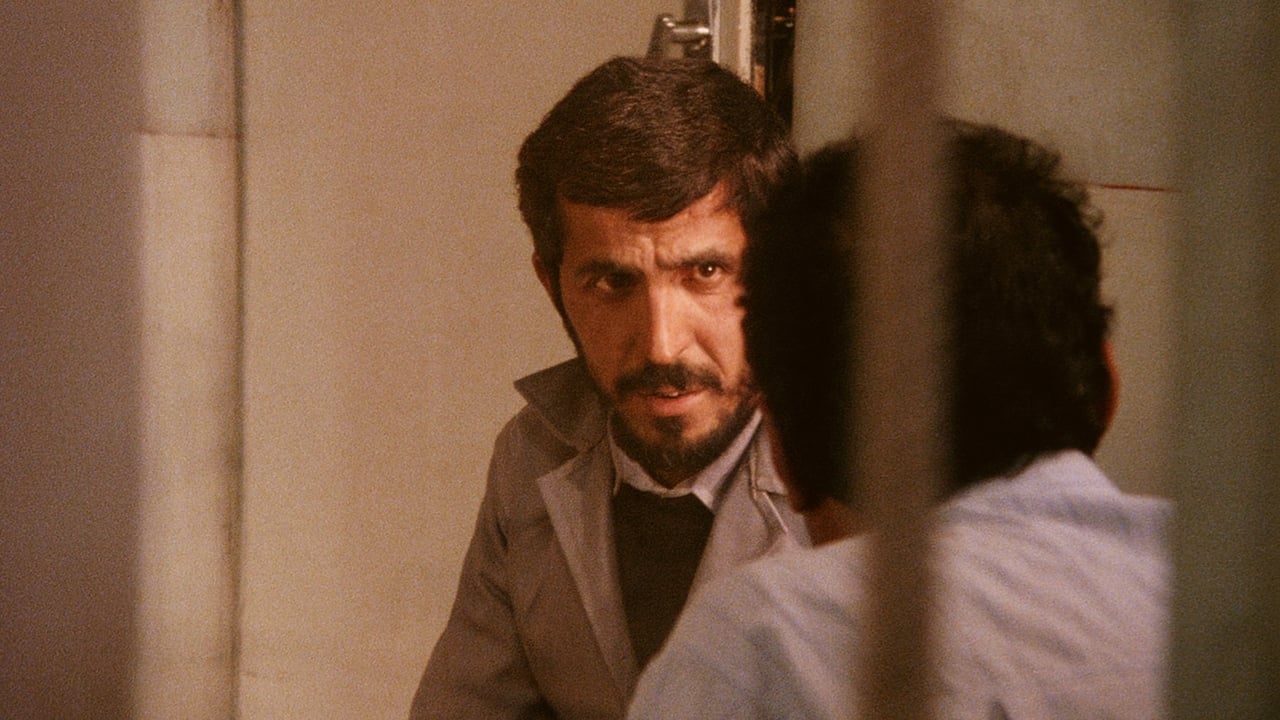akoaytao1234
Close-Up is a re-enactment of a real case concerning a poor Iranian who used the identity of a famous Iranian director to fraud a family into believing that they can star in his next upcoming movie , but Kiarostami takes things to another level. He blended true to life actions and let the victims and the perpetrator,themselves, do the re-enactment adding another layer to the film.Similar to his later film Certified Copy, Close Up is actually a look at the facade where we hide out of our true self or how one self-mythologize to be more acceptable or liked. By locking in the truth with that of re-enactment, the film was able to look closer through each of the character and see the reasons for their action.The biggest example of which is the petty thief himself. When he tries to be the director, he did it as he lacks everything and he struggles to put that act out to the public.Overall, Close-Up is a very complex film. It tackles much more than what I have written out here for sure but at its core, the film is a meditation of Kiarostami's style and humanism. [4.5/5]
Lee Eisenberg
Abbas Kiarostami died a few months ago, so I decided that I would watch this movie of his. "Nemā-ye nazdīk" ("Close-Up" in English) is based on the story of a man who pretended to be filmmaker Mohsen Makhmalbaf, and the subsequent trial. The movie tests your attention span with its long scenes and emphasis on dialog.I hadn't known of the story until I watched the movie. Kiarostami's movies often look at people striving towards goals (the only other one that I've seen is "Taste of Cherry"). But beyond the story, the movie functions as a look at this turning point in Iran's history. They had just come out of the eight-year-long war with Iraq - when the US, UK, Israel and USSR had armed Saddam Hussein against the revolutionary government - and Ayatollah Khomeini had just died. Iran remained a mostly isolated state for years afterwards until the US overthrow of Saddam Hussein allowed the Islamic Republic to have a stronger hand in the region.Anyway, the movie is worth seeing. Both Kiarostami and Mokhmalbaf play themselves in it. Too bad that we won't see any more Kiarostami movies. This year took him, David Bowie, Alan Rickman, Prince, Muhammad Ali, Gene Wilder, Leonard Cohen, Leon Russell and Lupita Tovar. That and the ascendance to the US presidency of an unhinged demagogue make 2016 one crummy year.
adrin-65078
The two shots of a tin can rolling down a street in Kiarostami's Close-Up, epitomise something essential in the nature of his film. In the first shot the journalist Farazmand accidentally kicks a can sending it bouncing down the street. It might seem that this is an arbitrary event but Kiarostami's camera stays with the can as it clatters down the street before finally coming to rest. Later in the same sequence Farazmand again kicks the same can, this time deliberately, and it clatters further down the road, ending up nestled against the kerb. The film immediately cuts to a shot of newspapers rolling off the press with the story of Sabzian's impersonation of the director Makhmalbaf. These 'tin can' shots reminded me of Sam Mendes film 'American Beauty' where we see a shot of a crumpled paper bag blowing about at the end an ally. It is blown about unable to escape its confines, watched by Lester the movie's protagonist. Like Kiarostami's 'tin can' shots it's of long duration, signifying that the director attended to the shot.Mendes' shot struck me as a piece of pretentious symbolism, using this heavy handed visual metaphor to convey Lester's state of mind. It seemed a contrived psychic moment, an otiose signifier adding nothing to the film. Without a visible agent, the shot looked artificial, simulated either in production with a wind machine or in post-production. Kiarostami's 'can shots' have a quite different quality. An agent kicks out and a tin can rolls noisily down the incline of a street. The 'can shots' has nothing to do with narrative or state of mind, they simply fit the structure of a film which is non narrative non linear and incorporates chance and inconsequentiality as part of life. Close-Up is a mixture of documentary, cinema verite, dramatic reconstruction built on a premise in which the aspiration and practice of film making are a fundamental idea.Into this subject with its multiple laminations built on the complexity of its human relations and the way people perceive one another, accident and material irrelevance are incorporated into the material, Kiarostami observes that these elements of life often intrude into the most fateful moments of existence. Kiarostami's tin cans don't mean anything beyond themselves, like his film and its players, the cans simply run their natural course. The viewer gets the idea: what a long way tin cans roll when kicked, almost forever; what a huge clattering sound they make, almost deafening. The tin cans exist as an object of the camera's lens for their own sake: no state of mind, no metaphor. Just cans. Like the protagonist Sabzian, he is just Sabzian.Close-Up, at one level, is a satire on the egotistical banality of film making that puts the 'Director' at the centre of the process. Sabzian's impersonation of a director stems from his perception of the power relations he understands as being at the core of movie production. The Director can make demands: on actors, sets, scripts. Like little dictators they have license to make things happen according to whim or will. Sabzian's position in society as an unemployed printer, a powerless non-entity, lends huge allure to the idea of being a film director. One who calls the shots. The difference between Sabzian and Western wannabees is that the latter are thinking 'career'. Sabzian in some confused manner, simply wants to tell of his suffering. His phantom film making, like Bergman's, is driven by an internal imperative. But at another level Close- Up is an anti satirical statement about about a type of film directing in which ego takes a step back. A film making based on a certain kind of perception about what film is.Kiarostami does not primarily use control and manipulation as the dynamic of his film making. The basis of his film making is to bring the idea to life. As a film maker he works by releasing ideas into situations and seeing to where they lead. Understanding where the idea takes the material is for Kiarostami more important than any scripted destination. And his understanding and choice of situation as the crucible for an idea is critical to his work. For Kairostami's case the situations often arise out of the power tensions endemic in the social matrix.Close-Up like most of his films is set in Iran. The situation Kiarostami develops leads directly into cross sectional view of Iranian society. In the Law Court scenes, the family scenes, at the police station, we understand that Sabzian's actions don't take place in a vacuum: they occur within a complex interweaving of social relations: his mother, his wife, his children, his unemployment, his movie going. We see how the private, the personal, and the social interpenetrate. We see that these relations comprise a defining framework in relation to action that is separate from the subjective, but has its own weight. In contrast, American and increasingly Europeans make films which are increasingly concerned only with subjectivities. Individuals act as if in vacuo, as psychic agents of their own desires. Kiarostami's films are set firmly in the realm of the social.In the final scene Sabzian is released from prison and at the gate he is met by Makhmalbaf. The film's pay off was to be the recording of the conversation between the two. But for some reason the radio mics fail. Though we see the two men meet, we hear nothing of their conversation, only static and bumps from the sound system. Accidents mistakes and failure are part of life, and Kiarostami films life. So he lets the shot with its no sound ride. A joke on him and on all who are would-be controllers. In an important sense it doesn't matter. What we see is enough, the idea of the meeting is enough to carry the shot through: we don't need to know more.
valbrazon
I've just finished "Nema-ye Nazdik" (Close-up) and i LOVED it. It's about the trial of a man who impersonate the identity of Mohsen Makhmalbaf to a family. Hossain Sabzian is the protagonist and he played the role in a very good way. He tell honestly what he did and assumes as he has done something bad, which is different than clichés as we can see on others movies like "I'm innocent, i didn't do anything".It's also a movie about cinema, the names of Makhmalbaf movies are mentioned many times like "Bicycleran" (The Cyclist) and "Arousi-ye Khouban" (Marriage of the Blessed). The movie title is also a reference to the cinema because a "close-up" it's a type of shot, the director who wants to make a film about the trial of Hossain Sabzian shoot him in close-up.


 AD
AD




